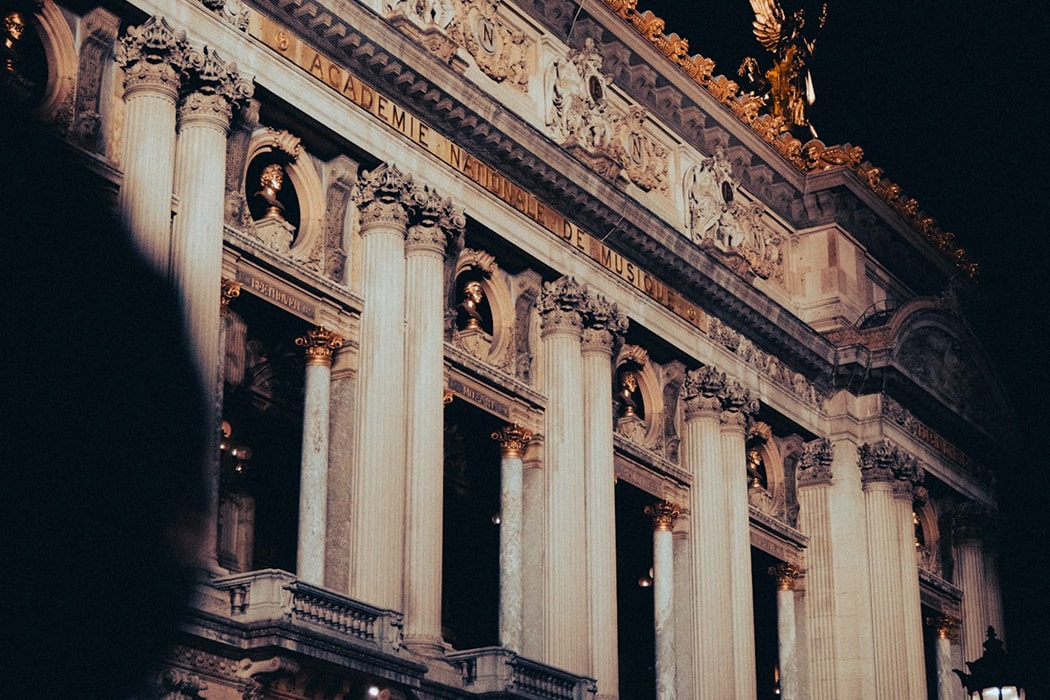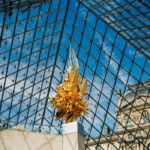Introduction to the History of Palais Garnier
The history of Palais Garnier is a vibrant tapestry woven into the very fabric of Parisian culture. Known not only for its grand performances but also for its architectural splendor, the opera house stands as a monumental ode to the arts. Commissioned during the height of the French Second Empire, it has become the birthplace of countless iconic operas and ballets. To truly appreciate the grandeur of Palais Garnier, one must delve into the fascinating history that has made it an emblem of artistic excellence.
The Vision Behind Palais Garnier
The Commissioning of Palais Garnier
The journey of the history of Palais Garnier began with a tragic event. In 1873, the old Opéra de Paris burned down, leading to the determination to build a new opera house that would symbolize the glory of the French Empire. The French government organized a competition to choose an architect for this monumental task. The call for proposals attracted a multitude of architects, but it was Charles Garnier's design that captured the imagination of the jury.
Charles Garnier—The Master Architect
Garnier, a relatively unknown architect at the time, submitted a design that showcased an eclectic style combining elements of baroque and neoclassical architecture, earning him the commission in 1861. His vision was ambitious, symbolizing not just the high art of operatic performance but also the grandeur of Paris itself. Nearly 14 years later, in 1875, Palais Garnier was inaugurated, a testament to Garnier's formidable talent and aspiration to elevate the operatic experience.
Architectural Splendor
Design and Structure
The history of Palais Garnier is deeply intertwined with its opulent architecture. Spanning over 11,000 square meters, the building's facade is adorned with intricate sculptures and decorative elements that are a hallmark of the Beaux-Arts movement. The lavish use of marble, gold leaf, and frescoed ceilings offers a visual delight, drawing visitors from around the globe.
The Grand Staircase
One of the most striking features of the Palais Garnier is the Grand Staircase, which serves as a breathtaking entrance. This masterful design showcases a sweeping ascent, flanked by statues and gilded balustrades, creating an incredible first impression for the many guests that attend performances. This staircase not only serves an architectural purpose but also symbolizes the elevation of artistic expression.
The Grand Foyer
The Grand Foyer is another marvel within the Palais. This expansive hall is decorated with magnificent chandeliers, mirrors, and frescoes depicting mythological themes. The interplay of light and opulence encapsulates the essence of the history of Palais Garnier and stands as a representation of 19th-century Parisian aesthetics.
Cultural Significance
The Role of Palais Garnier in the Arts
The history of Palais Garnier is not merely about bricks and mortar; it embodies nearly 150 years of cultural significance. As a prestigious opera house, it has served as the venue for memorable performances by world-renowned artists, establishing itself as a cornerstone of France’s cultural identity.
Hosting Legendary Performances
Over the decades, Palais Garnier has been home to iconic premieres, including operatic masterpieces by composers like Camille Saint-Saëns and Giacomo Puccini, along with ballets featuring choreography by legends such as Sergei Diaghilev. The grand stage continues to resonate with performances that evoke deep emotional responses, showcasing the enduring power of the arts.
The Importance of Ballet
During the 20th century, Palais Garnier gained significant prominence as a ballet venue. The Paris Opera Ballet, one of the leading ballet companies in the world, hosts its performances here, embracing both traditional and contemporary works, thereby emphasizing the versatility and dynamism that define the cultural landscape of the Palais.
Behind-the-Scenes Stories
Secrets of the Palais
A closer look at the history of Palais Garnier unveils intriguing stories and secrets that enrich its character. For instance, it is rumored that the opera house is haunted by the ghost of a mysterious "Opera Ghost," a legend popularized by Gaston Leroux's novel "The Phantom of the Opera." This storytelling element adds an air of mystique, keeping audiences fascinated with the Palais beyond just its performances.
The Underground Lake
One of the most striking features, which also feeds into the ghostly tales, is the underground lake beneath the Palais. Originally intended to be a water reservoir, this body of water further accentuates the opera house's innovative design while stirring imaginations about its mysterious depths.
The Cost and the Controversies
The journey of constructing the Palais was not without its difficulties. The project exceeded its initial budget, leading to various controversies, including concerns about corruption and mismanagement. Despite these challenges, the grand opening eventually gave way to applause for its architectural brilliance, solidifying its place in both the city’s skyline and cultural history.
Modern-Day Relevance
Conservation and Restoration Efforts
The history of Palais Garnier does not end in the 19th century; it continues to evolve. Modern-day efforts focus on conserving the architecture and artistry of the building while adapting it to contemporary performance needs. These initiatives ensure that the venue remains a vital part of Paris's cultural landscape.
Accessibility and Technology
In recent years, Palais Garnier has embraced modern technology, enhancing the audience experience with improved acoustics and scenic fixtures without detracting from its historical authenticity. Accessibility initiatives make it easier for audiences of all backgrounds to enjoy performances, further solidifying its commitment to future generations.
A Thriving Arts Community
Today, Palais Garnier serves as a vital hub for the arts in Paris, hosting not only operatic and ballet performances but also concerts, educational programs, and public tours. This multifaceted approach reinforces the building's role as a cultural institution, vital to the enrichment of the arts community in France.
Conclusion
The history of Palais Garnier is a remarkable narrative that showcases its significance far beyond a mere performance space. From its stunning architecture to its rich cultural legacy, every corner of the building whispers stories of artistic glory. As it stands proudly in the heart of Paris, the Palais Garnier continues to inspire awe and excitement, remaining an enduring symbol of the operatic and balletic arts.
FAQ
What is the history of Palais Garnier?
The history of Palais Garnier began in the 19th century when it was commissioned to replace the previous opera house that had burned down. Designed by Charles Garnier, it officially opened in 1875 and has since become a significant cultural landmark in Paris.
Who designed the Palais Garnier, and what is significant about the architect?
Charles Garnier designed the Palais Garnier, and his vision embodied the Beaux-Arts architectural movement. His work combined aesthetics with functional elegance, resulting in one of the most celebrated opera houses worldwide.
What notable performances have occurred in the history of Palais Garnier?
Throughout its history, Palais Garnier has hosted legendary performances, including premieres of operas by composers like Puccini and Saint-Saëns, and innovative ballets that have showcased the talents of the Paris Opera Ballet.
How has the history of Palais Garnier influenced modern-day opera and ballet?
The history of Palais Garnier has significantly influenced contemporary performing arts by serving as a model for architectural and artistic excellence. Modern adaptations have ensured its relevance while maintaining its historic charm, making it a thriving hub for the arts.
Are there any myths associated with the history of Palais Garnier?
Yes, among the most famous myths is that of the "Opera Ghost," inspired by Gaston Leroux's "The Phantom of the Opera." This legend, along with tales of a hidden underground lake, contributes to the mystique of the Palais Garnier, captivating visitors and enhancing its historical allure.
For more information and to plan your visit to the Palais Garnier, you can check the official website of the Palais Garnier here.



